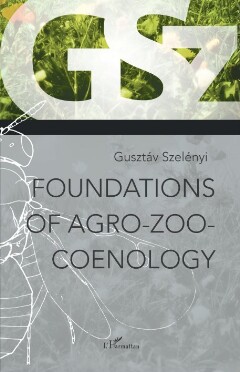

OCR
§ Theoretical basis of the categorisation | 77 of the aphid Aphis pomi. The colony is not a zoocoenological term, but is a manifestation of an ethological feature of this species, which can obviously affect other populations of the zoocoenosis; all the other populations influence the coexisting populations, via their species-specific features. An ant hill is not, in itself, a zoocoenosis, but its different populations belong to a zoocoenosis. The difference between colony and grouping is that, in a colony, individuals or at least semaphoront groups belonging to one or more species live together (for example aphids), without influencing their bionomics; the groupings are coexisting groups of the same species in which the semaphoront groups collaborate for the good of the community, following some sort of division of labour. The above two social forms of animal associations were exhaustively categorised by Deegener (1918), distinguishing the two groups based on whether individuals become “tools” for others’ interests or not. The terms used for the two are societas and associatio, corresponding to our two groups. The social categories defined do not correspond to any of the zoocoenological categories; therefore, we can only use them when we want to emphasise the ethological characteristics of one of the populations. The zoocoenosis should be sought for within assemblages but, for the very reason that one is within the other, it cannot be identical with it. To associate, two or more populations must meet in space; consequently, coexistence, or more precisely coincidence (Thalenhorst, 1951), is the physical precondition of all associations, yet many populations co-occur but do not associate with each other. The animal assemblages are most importantly related to space and,therefore, are animal-geographical terms, and the seasonally changing animal assemblages are held together by occupying the same space. A zoocoenosis, on the other hand, is related to energy sources, and thus is a biocoenological unit; its seasonal manifestations are the aspects (see p. 138), and are held together by strict trophic links. We have established earlier that animal associations can be formed by two explanations: they are connected by trophic links, either directly, or to a common energy source (by which we always mean plant food). The association created by these two causes is formed through time but is, necessarily, also fixed in space, but never with the stability of an aspect, and it is the space that is what can change with the highest frequency (change of oecus or biotope). This means that various, contemporaneously existing food chains can cut across each other in space, perhaps even with temporary interactions. The third criterion is, therefore, the sharing of the same space. What is the difference, though, between the simple coexistence and the associative coexistence? The latter has three criteria: a) the presence of whole populations, as opposed to single semaphoronts; b) durable coexistence, and; c) being linked to one or more food chains. This statement does not contradict the coenological literature. All authors share a desire to link the results of zoocoenological studies with the
Szerkezeti
Custom
Image Metadata
- Kép szélessége
- 1831 px
- Kép magassága
- 2835 px
- Képfelbontás
- 300 px/inch
- Kép eredeti mérete
- 1.4 MB
- Permalinkből jpg
- 022_000049/0078.jpg
- Permalinkből OCR
- 022_000049/0078.ocr
Bejelentkezés
Magyarhu
